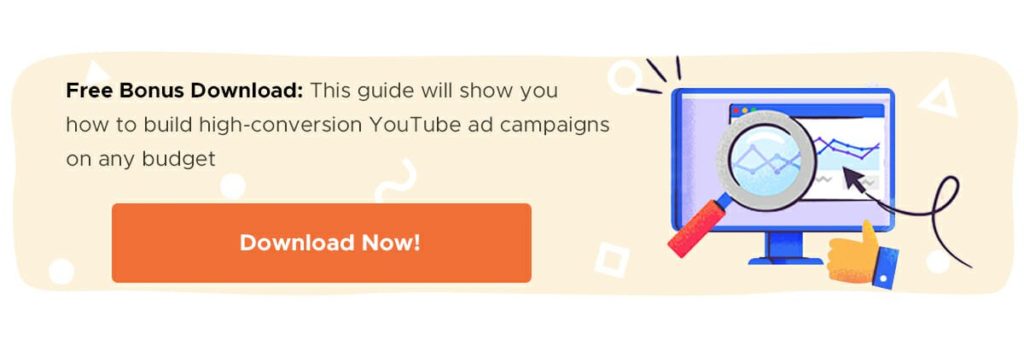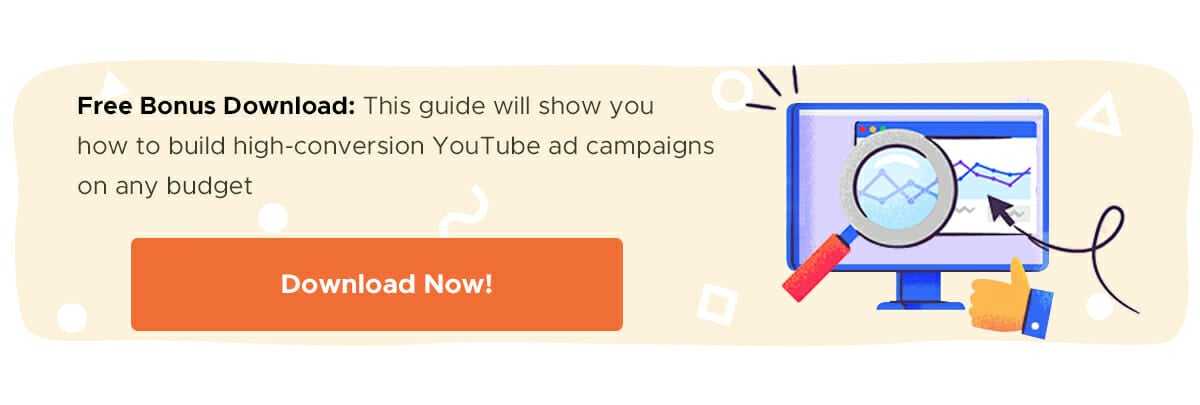NOW UPDATED! This post was expanded for 2019 with new tactics for growing your business with influencer marketing. Enjoy!
- What Is Influencer Marketing?
- The Growth of Brand Influencer Partnerships
- Why Brands Rely on Influencer Marketing
- How to Work With Brand Advocates and Influencers
- Brand + Influencer: Make It Mutually Beneficial
- How to Become a Social Media Marketing Influencer
- How Influencer Marketing Helped Multi-Million Dollar Companies: Case Studies
Marketing can drive even the most hardened entrepreneur up the wall. Branding, speaking your audience’s language, choosing appropriate platforms for your product, and figuring out which marketing strategies are most effective for your target market can be a real challenge.
If you’re feeling overwhelmed, it’s time to experiment with fresh ideas – like influencer marketing – that can boost your marketing ROI and bottom line.
What Is Influencer Marketing?
Referrals have long since been one of the most effective marketing strategies. If you have a problem and one of your friends tells you about a great solution for it, there is a good chance that you’ll go buy it.
Influencer marketing is just like that – only at scale. Influencers have already built a loyal following of people who trust them. So when they tell their fans and followers about how great your product is, there is a much higher chance that their audience will convert, simply because they need the product and trust the influencer.
Typically, the seller or marketer will give a special discount code just for the influencer’s audience in order to track how effective the campaign is.
Here are a few inspiring stats about influencer marketing:
- 70% of teenage YouTube subscribers trust influencer opinions over traditional celebrities
- On average, businesses generate $6.50 for every $1 invested in influencer marketing
- 49% of consumers depend on influencer recommendations
- 89% of marketers say that ROI from influencer marketing is comparable to or better than other marketing channels
For these reasons, brands and influencers are now forging long-term relationships:
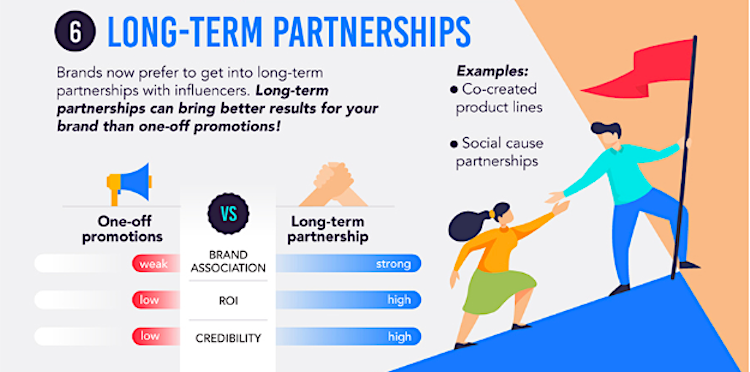
For example, when Motorola launched a new line of smartphones, they turned to influencers across YouTube to promote it. Why YouTube? They were already marketing their product to a young demographic and realized that those people hang out a lot on this particular platform.
They chose 13 influencers, each of whom made their own video promoting the smartphones. One of the most successful videos was made by an influencer who strapped it to a 10-foot rocket! The end result was:
- 11.6 million views
- 38.1 million social impressions
- 122,000 clicks to the website (80,000 of which were first-time visitors)
Dive Deeper:
The Growth of Brand Influencer Partnerships
The influencer marketing space is expected to hit $10 billion by 2020.
As paid ad costs continue to rise on social media platforms like YouTube and Instagram, businesses have to find a way to survive. This is where influencer marketing steps in. Working with influencers can be cheaper than paid advertising and is much more effective because you can buy into the influencer’s loyal (and often huge) following.
Industries like fashion/beauty and photography have seen a huge rise in the popularity of influencer marketing over the past several years. A recent survey shows that 57% of fashion companies currently use influencer partnerships and 21% expect to begin leveraging it soon.
So what does the future of influencer marketing look like? Is it a trend that will soon fizzle out or become over-saturated? Or is it worth jumping into it?
Rest assured that influencer marketing will not be going away any time soon simply because the sheer number of eyeballs on social media continues to grow. The popularity of social networks, in turn, leads to an increase in the number of influencers, which means that that’s where the marketing spend is:

The influencer marketing space still has a long way to go before it becomes saturated, though you should expect it to become more expensive because it works so well.
Still not sure if you should jump on the bandwagon? Take a look to see if there are other brands in your industry running ads with influencers. You’ll probably see that several are, and if any of them have been running ads for several months or years, it’s a good sign that it’s working in your space.
Even if you don’t see anyone using it in your industry, it still might be worth finding a highly compatible influencer and testing it out.
Related Content:
Why Brands Rely on Influencer Marketing
Even though influencer marketing is a relatively new strategy, it continues to be a viable solution for marketers who are willing to think outside the box on building trust with their target market. Here’s why brands are relying on influencer marketing.
1) Influencers Have Real Power
There aren’t many things that drive sales more effectively than good ol’ word-of-mouth marketing:
This is part of an overall shift in how we prioritize recommendations over paid television, magazine and newspaper ads and it’s hard to ignore the power of these unofficial brand ambassadors. Influencer marketing provides an opportunity for companies to leverage the power of social proof, all the while relying on those who already have a large following:

Content on standing out with influencers:
2) It’s a Social Thing
According to the Pew Research Center:
- 69% of Americans use Facebook
- 28% of Americans use Pinterest
- 37% of Americans use Instagram
- 27% of Americans use LinkedIn
- 22% of Americans use Twitter
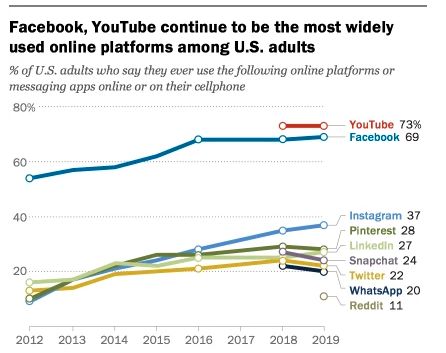
Having a strong social following is a dynamic way to interact with customers on a daily basis. Influencers will probably be able to help you grow your social following almost overnight, just by introducing a large number of targeted customers to your social media pages. Even if they don’t convert with the initial influencer campaign, you can retarget them with, for example, Facebook ads.
In addition, having an influencer help you increase your social media following also improves your SEO. How?While social media presence isn’t a confirmed ranking factor, it is a signal to search engines that you have a substantial following which they equate to brand quality. As you are probably aware, brands are indeed the way of the future.
Content on influencers + SEO:
How to Work With Brand Advocates and Influencers
If you’re ready to take the step of working with an influencer, check out our companion article: How to Get Started With Influencer Marketing
1) Finding the Perfect Influencer for Your Brand
Now that you are confident that influencer marketing is worth exploring, it’s time to actually find appropriate influencers. This means you need to figure out both which channels you want to use as well as what type of influencer you want:

Here are a couple of ways to figure this out:
- Ask your audience. If you work with a software company, for example, you might simply get on a call with one of your customers and ask them what types of media they prefer and where they like to consume it (podcasts, blog posts, videos; YouTube, Instagram, Facebook, etc). You can also do this via your email list. Then find some influencers on those platforms and ask your customers if they follow any of those people. If they do, bingo! If not ask for suggestions.
- Do some competitor research. You’re probably doing some of this research already, so just check to see whom your competitors are partnering with. You likely won’t be able to make partnerships with the same influencers, though you should find competitors of the influencers and then create partnerships with them.
- Use a tool like Famebit. This connects you directly with influencers who are willing to go into long-term partnerships with brands.
Dive Deeper:
2) Evaluating the Perfect Influencer for Your Brand
Now that you have some ideas about finding an influencer, here’s how to evaluate them for your brand:
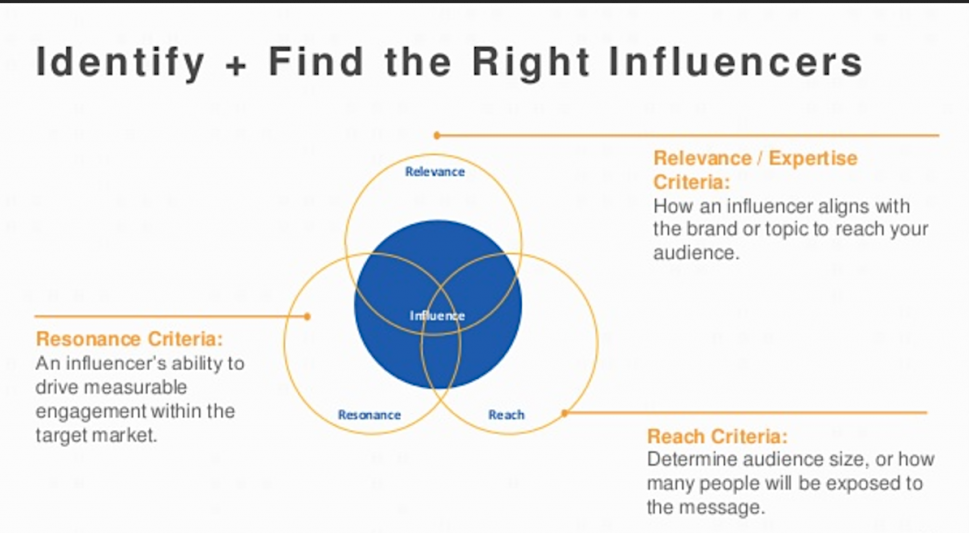
Social Media Reach
An influencer is only an influencer if they can actually influence others. Bit of a tongue twister, but makes sense, right?
Simply put, the larger the reach, the larger the number of people who will see your product or service. An Instagram user with 1,500 followers may be able to generate some results, but an Instagram user with 150,000 followers can really push your message to your audience.
Of course, bigger is not always better. You should also take into consideration past engagement, as this helps you understand if the person’s audience truly listens to what they have to say:

Sticking with Instagram, you may find that a person with 15,000 followers receives an average of 500 likes on each update. Conversely, a person with 30,000 followers may only receive an average of 100 likes per update.
While the person with more followers will put your brand in front of more people, the post or video may not receive as much engagement. This is a balancing act with a trial-and-error component.
Depending on your budget and the level of engagement per follower you desire, you may want to look into a micro-influencer, or an influencer with a smaller (usually up to 10K) audience in a specific niche. Again, a macro-influencer may promote you to millions, but how many are really listening? Are they really willing to engage in the way that someone specifically in your niche would?
Here’s an idea of how much micro-influencers charge:
Sponsored blog posts:
- 96% charge $1,000 or less per post
- 87% charge $500 or less per post
Facebook posts:
- 96% charge $500 or less
- 90% charge $250 or less
Branded tweets:
- 96% charge $200 or less
- 90% charge $150 or less
Dive Deeper: Why You Should Pay for Celebrity Endorsements [podcast]
Influencer Audience Segment
Before engaging with an influencer, understand where your audience hangs out. For example, do they prefer Instagram or Twitter?

One of the primary mistakes among influencer marketers is chasing after personalities with a large following and nothing else. As noted above, a large reach is a good place to start. But again, it’s not the only point to consider.
You must make sure that the person’s audience matches your brand. For example, a swimsuit model with 100,000 followers could be the perfect target if you are selling women’s apparel. But would this person be able to do anything for your software business? Probably not (or, rather, hopefully not!). This influencer’s audience is not interested in software.
Dive Deeper:
A Natural Approach to Marketing
There are two sides to influencer marketing: brands and influencers.
On one side, companies are willing to pay influencers to push their product or service to their audience. On the other side, influencers are willing to push the product or service as long as they are fairly compensated.
But here is the catch: some influencers take this one step too far. It seems that every update they make is some type of product plug. Over time, their audience takes notice and the effectiveness begins to wear off because, as with traditional marketing, people don’t want to be sold something; they want to see the value of something.
Align yourself with people who take a “natural approach” to influencer marketing. They are willing to partner with some brands, but are selective about who they partner with because they have to believe in the brand and product.
Brand + Influencer: Make It Mutually Beneficial
Just like any relationship, influencer marketing should be a two-way street. If your brand is the only party that benefits, you likely won’t get anyone to agree to a relationship with you, and if they do, they probably don’t have a great following.
The average formula for influencer compensation looks something like this:
$100 x 10,000 followers + extras = total rate
Use this to get an idea before you start reaching out to people. Make sure that you aren’t low balling your potential partners and offending them before you even get to the negotiation process.
There are several different ways in which you can compensate influencers:
- Cash is the most common form of compensation. Most influencers prefer this method and will request it. The only caveat with this is that the person may not be truly invested in your brand and therefore doesn’t put their heart into the project. If your company has the resources, however, the data confirms that this is one of your best options. But what if you’re a small company that doesn’t have the money to pay an influencer? You could try…
- Free product or discount. Why not offer somebody a free product or a discount in exchange for a shout out? This doesn’t have to be the only arrangement, but it is a good way to build a relationship. Over time, you may phase this out and opt for another form of payment.
- Commission. This is a win-win, as both parties have skin in the game. You pay the person to share your brand’s product with their audience and any sale they generate will result in a commission paid to the influencer. As long as you are fair with the commission structure, this is one of the best arrangements.
- Creative freedom. Crowdtap ran a survey of 59 influencers, asking them what persuaded them to work with brands more than once:
- 77% said that creative freedom is important to them
- 49% said that they loved working with clients who understood their interests and sent relevant opportunities
- 47% said that they loved working with brands whose message aligned with their own values
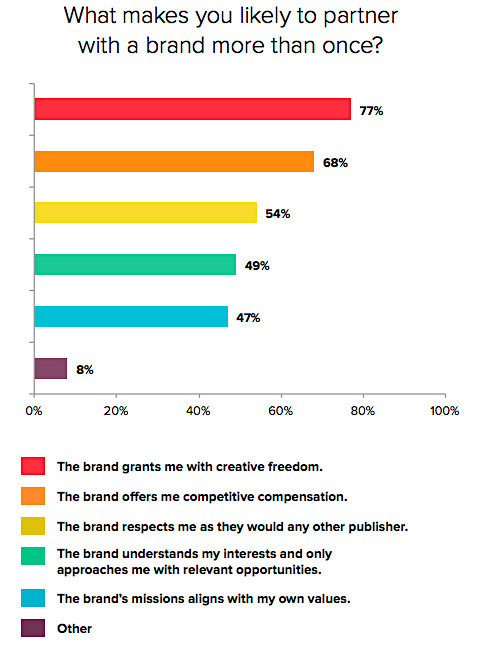
With a mutually beneficial arrangement, your influencer marketing campaign will thrive.
Content on getting influencers to work with your brand:
Set a Budget, Track Your ROI
Last, but not least, it’s important to set a budget.
Keep in mind that a poll by influencer marketplace Tomoson shows that for every dollar spent on influencer marketing, businesses are generating $6.50 in revenue.
If this is your first time trying out influencer marketing, you’ll want to keep it relatively small so that you can figure out what works and what doesn’t. However, as this continues to grow in popularity, more and more companies are choosing to increase their budget:
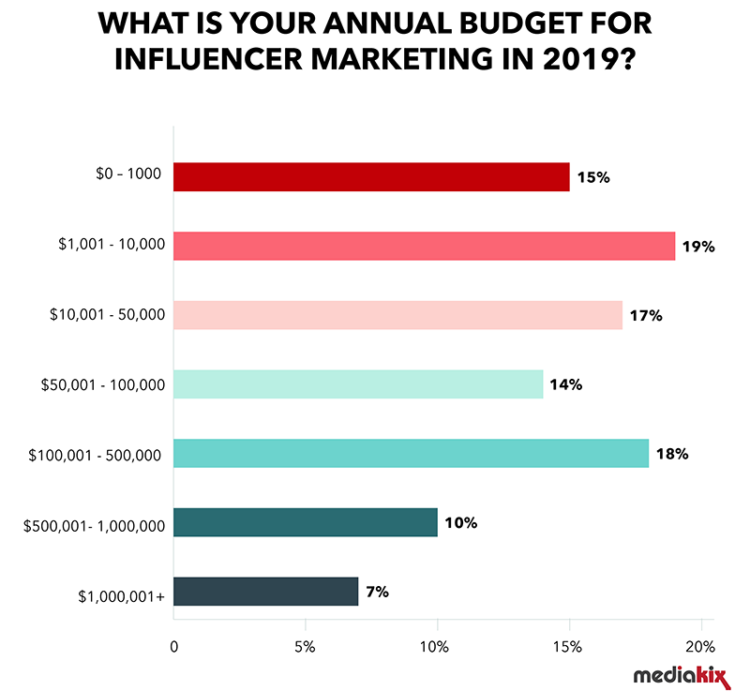
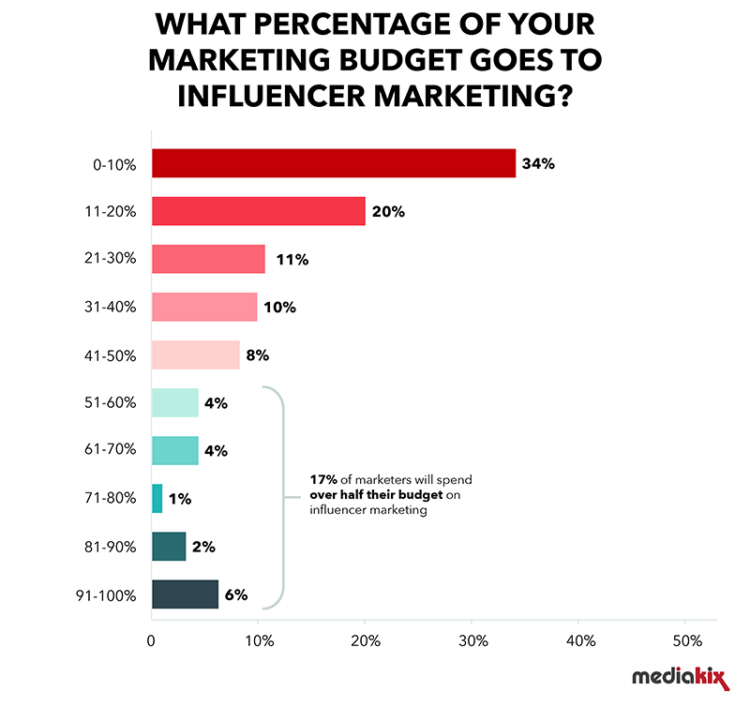
Maybe you have a particular dollar amount in mind. Or maybe you are measuring this based on the time it takes to connect with influencers. It’s easy to go overboard with influencer marketing, as every opportunity will appeal to you in some way, so it is your job to stick to your budget and only spend money when it makes sense to do so.
To do this, you’ll need to track your ROI. Not only does this show you what is and is not working, but it also puts you in a position to tweak your strategy and increase your budget in the future.
Dive Deeper:
Final Thoughts
Working with influencers is a great way to immediately tap into a loyal audience. It will give you a great increase in traffic and some sweet sales, too – but remember that over time, it won’t scale. It’s something that is going to continue to cost you to play and, because it is working so well, the market will become more and more saturated.
Make sure that you provide an amazing customer experience for the influencers you work with and the customers/audience that come your way as a result. Eventually, you will get to be the influencer and sell directly to your fans over and over again.
